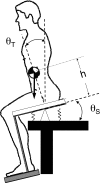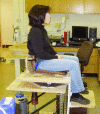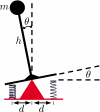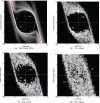Detecting dynamical boundaries from kinematic data in biomechanics
- PMID: 20370297
- PMCID: PMC2814835
- DOI: 10.1063/1.3267043
Detecting dynamical boundaries from kinematic data in biomechanics
Abstract
Ridges in the state space distribution of finite-time Lyapunov exponents can be used to locate dynamical boundaries. We describe a method for obtaining dynamical boundaries using only trajectories reconstructed from time series, expanding on the current approach which requires a vector field in the phase space. We analyze problems in musculoskeletal biomechanics, considered as exemplars of a class of experimental systems that contain separatrix features. Particular focus is given to postural control and balance, considering both models and experimental data. Our success in determining the boundary between recovery and failure in human balance activities suggests this approach will provide new robust stability measures, as well as measures of fall risk, that currently are not available and may have benefits for the analysis and prevention of low back pain and falls leading to injury, both of which affect a significant portion of the population.
Figures














References
-
- Bureau of Labor Statistics, 2001, United States Department of Labor, http://www.bls.gov/iif/oshcdnew.htm.
-
- Casdagli, M., Eubank, S., Farmer, J. D., and Gibson, J., “State space reconstruction in the presence of noise,” Physica D PDNPDT 51, 52–98 (1991).10.1016/0167-2789(91)90222-U - DOI
MeSH terms
LinkOut - more resources
Full Text Sources

